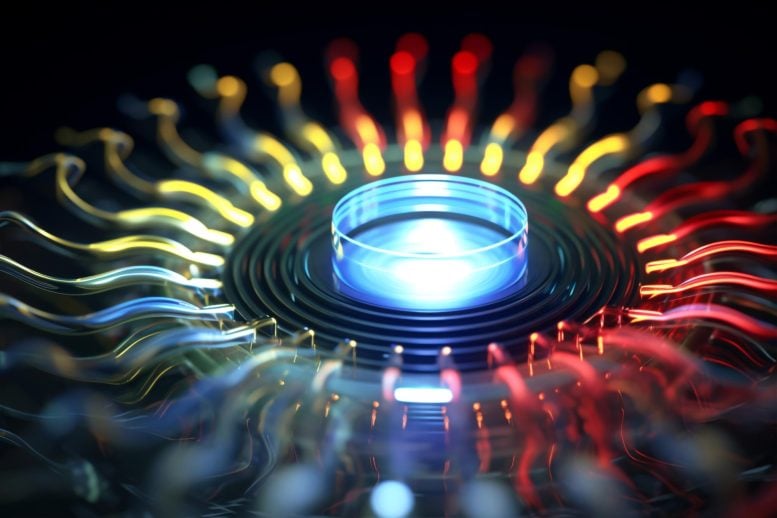A recent study has discovered the “orbital Hall effect,” a phenomenon that could significantly improve data storage in future computer devices. The discovery, which involves generating electricity through the orbital motion of electrons, offers potential advances in the field of spintronics, leading to more efficient, faster and more reliable magnetic materials. Image source: SciTechDaily.com
The research proposes a new way to enhance spintronics, paving the way for future technological advancements.
In a new breakthrough, researchers have used a new technique to identify a previously undetected physical phenomenon that could be used to improve data storage in the next generation of computer devices.
Spintronic memory is used in advanced computers and satellites to store and retrieve data using the magnetic state generated by the inherent angular momentum of electrons. According to its physical motion, the spin of electrons generates magnetic currents. This phenomenon is known as the “spin Hall effect,” and it has important applications in magnetic materials in many different fields, from low-power electronics to fundamental quantum mechanics.
Recently, scientists have discovered that electrons can also generate electricity through a second kind of motion: orbital angular momentum, similar to the way the Earth rotates around the sun. This is called the “orbital Hall effect,” said study co-author Roland Kawakami, a professor of physics at Ohio State University.
A way to observe the orbital Hall effect
Theorists predict that by using light transition metals (materials with weak spin Hall currents), magnetic currents generated by the orbital Hall effect will be more easily found flowing along them.Until now, directly detecting something like this has been a challenge, but the study, led by physics graduate student Igor Lyalin, is published in the journal Physical Review Lettersshowing how to observe the effect.
“For decades, people have been discovering various Hall effects,” Kawakami said. “But the idea of these orbital currents is really a new one. The difficulty is that they are mixed with the spin currents in typical heavy metals, and it is difficult to distinguish them.”
Instead, Kawakami’s team demonstrated the orbital Hall effect by reflecting polarized light, in this case a laser, onto various thin films of the light metal chromium to detect the potential accumulation of orbital angular momentum in the metal atoms. After nearly a year of painstaking measurements, the researchers were able to detect a clear magneto-optical signal, which showed that electrons gathered at one end of the film exhibited strong orbital Hall effect characteristics.
Impact on future spintronics applications
Kawakami said this successful detection could have a huge impact on future spintronics applications.
“The concept of spintronics has been around for about 25 years or so, and while it has been really useful for various memory applications, people are now trying to go further,” he said. “Right now, one of the biggest goals in the field is to reduce energy consumption because that’s the limiting factor in improving performance.”
Reducing the total energy required for magnetic materials to function well in the future could lead to lower power consumption, higher speeds and improved reliability, and help extend the life of the technology. Using orbital flows instead of spin flows could save time and money in the long run, Kawakami said.
The researchers note that this study provides a way to learn more about how these strange physical phenomena appear in other kinds of metals, and they hope to continue to delve into the relationship between the spin Hall effect and the orbital Hall effect. Complex connections.
Reference: “Magneto-optical detection of the orbital Hall effect in chromium” by Igor Lyalin, Sanaz Alikhah, Marco Berritta, Peter M. Oppeneer and Roland K. Kawakami, October 11, 2023 Physical Review Letters.
DOI: 10.1103/PhysRevLett.131.156702
Co-authors are Sanaz Alikhah and Peter M. Oppeneer of Uppsala University, and Marco Berritta of Uppsala University and the University of Exeter. This work was supported by the U.S. National Science Foundation, the Swedish Research Council, the Swedish National Computing Infrastructure, and the K. and A. Wallenberg Foundation.
#Spintronics #breakthrough #Scientists #confirm #previously #undiscovered #physical #phenomenon
Image Source : scitechdaily.com
